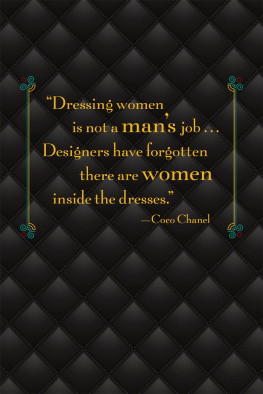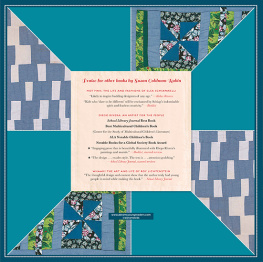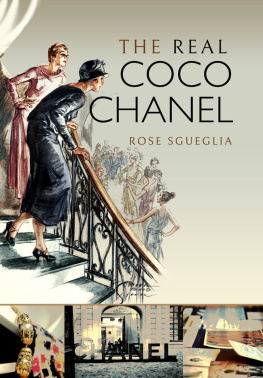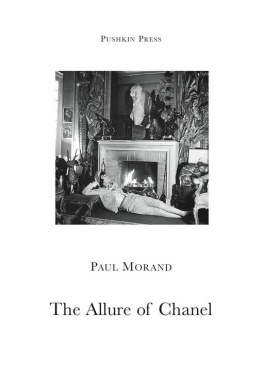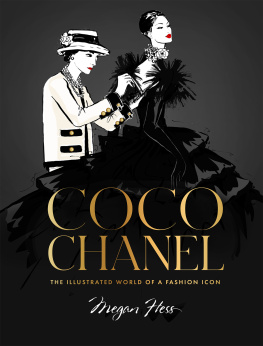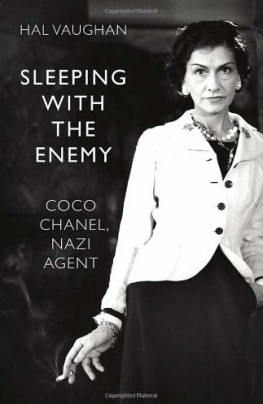
Cataloging-in-Publication Data has been applied for and may be obtained from the Library of Congress.
ISBN 978-1-4197-2544-9
eISBN 978-1-68335-291-4
Text copyright 2018 Susan Goldman Rubin
Book design by Erich Lazar
Published in 2018 by Abrams Books for Young Readers, an imprint of ABRAMS. All rights reserved. No portion of this book may be reproduced, stored in a retrieval system, or transmitted in any form or by any means, mechanical, electronic, photocopying, recording, or otherwise, without written permission from the publisher.
Abrams Books for Young Readers are available at special discounts when purchased in quantity for premiums and promotions as well as fundraising or educational use. Special editions can also be created to specification.
For details, contact specialsales@abramsbooks.com or the address below.

ABRAMS The Art of Books
195 Broadway, New York, NY 10007
abramsbooks.com
For Elaina Ann Rubin and Olivia Juliet Rubin
CONTENTS
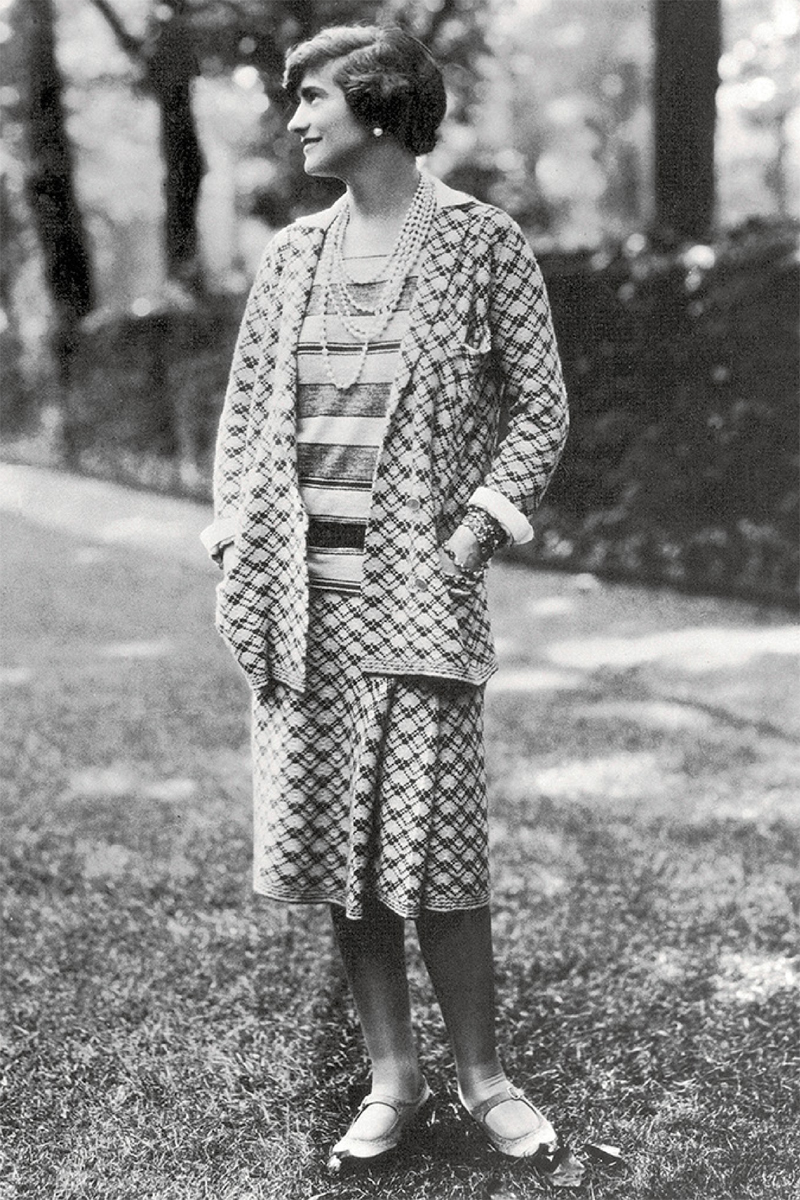
Coco wearing a knit jersey suit with a pocketed cardigan and her trademark strings of pearls, 1929
INTRODUCTION
Who Was Coco Chanel?
Her name stands for style. The little black dress. Strings of pearls tossed casually over a sweater. Quilted shoulder bags on chain straps. The perfume Chanel No 5.
I make fashions women can live in, feel comfortable in.
Chanel is Frances greatest figure, wrote her friend the novelist Paul Morand. Yet he noted her temper and sarcasm as well as her brilliance. She was a controversial celebrity, an innovator with an eye for fashion and a talent for business that made her enormously successful. At the same time, many regarded Chanel as an opportunist, a tyrant, a chronic liar, and a snob. Some even suspected her of being a Nazi sympathizer during World War II. Still, women everywhere were in awe of the Chanel brand and the products that bore her distinctive label. Coco designed clothes that she wore herself, and she was her own best model. Her friend surrealist artist Salvador Dal said,
All her life, all she did was change mens clothing into womens.
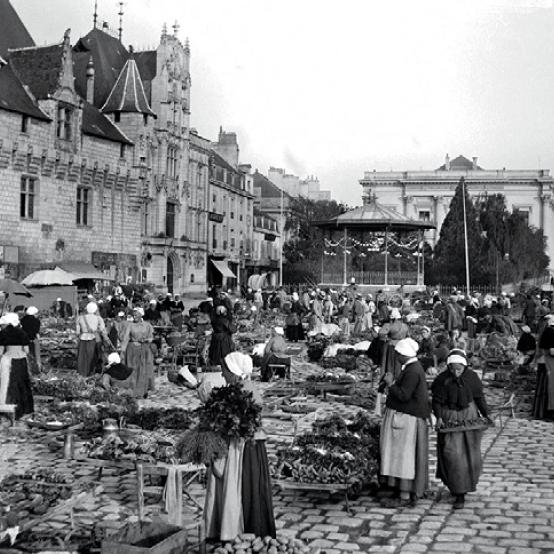
The marketplace in Saumur, Maine-et-Loire, the town where Coco was born
SELL HER TO THE GYPSIES

Coco was born in a poorhouse, a place for homeless people, in the town of Saumur, France, on August 19, 1883. Later, she invented a different version of her beginnings, but biographers have pieced together the true account. Cocos childhood colored her whole life.
Since her father, a peddler, was on the road when she was born, two workers from the charity hospital went to the city hall to record her birth. Cocos mother was still too weak to attend. When the mayor asked for the babys last name, no one knew how to spell it, so he incorrectly wrote Chasnel. Chanel never changed her birth certificate for fear of revealing the truth about her poor family.
At her baptism, a day after she was born, she was named Gabrielle. Later Coco lied and said that the nun whod held her also gave her the middle name Bonheur, meaning happiness, as a good-luck charm. Coco disliked the name Gabrielle because her mother hadnt chosen it, and she claimed that her father didnt like it either. She later told friends that he had called her Little Coco, a nickname she really acquired as a young woman.
Her parents were not married, and therefore Coco and her older sister, Julia, were illegitimate, a mark of disgrace in those days. Their parents finally married in November 1884. The family traveled from town to town in south-central France in a horse-drawn buggy. At markets and fairs, Cocos father sold bonnets that he had bought from a hatter. Her mother helped him and sold things at her own stall. More babies quickly came along: a son, Alphonse, and another daughter, Antoinette. By the time Coco was six, her exhausted mother was suffering terribly from asthma. Her great-uncle Augustin invited the family to stay at his house in the country, but Cocos restless father did not stay long, instead wandering off to drink at taverns and chase the ladies. After a while Cocos mother went in search of him, leaving the children behind.
No childhood was less gentle, said Coco. All too soon I realized that life was a serious matter. One night she and her siblings were put to bed in their great-uncles workroom. Bunches of grapes stored for the winter in paper bags hung from the rafters. Coco threw a pillow at a bag and it fell down. Delighted, she kept throwing pillows until she had burst all the bags and grapes covered the wooden floor. For the first time in my life I was whipped, she recalled. The humiliation was something I would never forget. One of her aunts predicted she would turn out badly. Another said, Well have to sell her to the gypsies. At that time, Gypsies, or Roma, had come to France from Bohemia. They were wanderers, and Coco most likely saw them at the markets and fairs where her parents peddled their goods.
All too soon I realized that life was a serious matter.
Coco at age nine spent hours playing by herself in the churchyard cemetery. I was the queen of this secret garden, she remembered. She talked to the dead and sometimes brought rag dolls that she had made to decorate the tombstones.
Meanwhile, her mother caught up with her father, and they had two more babies: a son, Lucien, and then another boy, Augustin, who died in infancy. When Coco was ten, her mother left her other children with Great-Uncle Augustin and took Coco and Julia with her to join their father at an inn where he worked as a waiter. During the cold winter, Cocos frail mother came down with bronchitis and ran a high fever. She died on February 16, 1895. Coco was eleven.

Nuns in prayer at the Aubazine convent-orphanage
None of their relatives wanted to take care of Coco and her siblings. Her brothers were placed at a farm to earn their keep. And Coco, Julia, and Antoinette went to an orphanage in Aubazine run by the sisters of the Congregation of the Sacred Heart of Mary.
I AM NOT AN ORPHAN!

Later in life Coco never used the word orphanage. Instead, she said her father took her to stay with unmarried aunts who always dressed in gray and black. My aunts were good people, but absolutely without tenderness, she would say. I was not loved in their house. She told the girls at the orphanage that her father had gone to America to seek his fortune and would come to get her as soon as he was rich. But in reality, after he dropped her off, Coco never saw him again.
Aubazine had been a monastery. The steep-roofed stone building stood on a plateau, surrounded by a forest. Inside, the walls were whitewashed, and the doors to the dormitories were painted black. Coco and the orphans wore white blouses and black skirts. The nuns had white wimples and black skirts.
Next page
